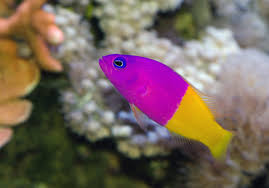The Dragon and Its Influence in Royal Ceremonies of Ancient China

In the heart of ancient Chinese culture, the dragon is not merely a mythical creature, but a profound symbol of power, prosperity, and divine protection. It has played a central role in both the spiritual and political realms of China, especially in the royal court. The dragon was intricately woven into the fabric of royal ceremonies, symbolizing the emperor’s divine authority and his connection to the heavens. From imperial enthronements to ceremonial rituals, the dragon stood as a representative of the emperor’s celestial mandate and his responsibility to rule with wisdom and power.
This article explores the significant influence of the dragon in royal ceremonies throughout Chinese history, emphasizing its symbolism, role in various royal rituals, and how it helped reinforce the authority of the emperor as the Son of Heaven. By examining the dragon’s impact on royal ceremonies, we gain insight into the power dynamics, cultural beliefs, and the intricate relationship between the monarchy and the divine in ancient China.
The Dragon as a Symbol of Imperial Authority
In ancient China, the emperor was not simply a political figure, but a semi-divine ruler. The title “Son of Heaven” reflected the belief that the emperor was chosen by the heavens to rule over the land and the people. The dragon was the primary symbol of this heavenly mandate, embodying the emperor’s connection to the divine and his role as the intermediary between heaven and earth.
The dragon was associated with imperial power for several reasons. In traditional Chinese mythology, the dragon was seen as the ruler of water, a crucial element in agricultural societies, and a symbol of cosmic power and vitality. The imperial dragon was believed to have the ability to control the elements, ensuring prosperity and stability for the people. Additionally, the five-clawed dragon was a symbol of the emperor’s exclusive authority, as only the emperor could use this specific representation of the dragon. As such, the dragon became a defining element of imperial identity, signifying the emperor’s role as both a temporal and divine ruler.
The Dragon in Imperial Ensigns and Attire
One of the most significant manifestations of the dragon’s influence in royal ceremonies was its appearance in imperial insignia and royal attire. The dragon was depicted in various forms on the emperor’s clothing, the imperial seal, the throne, and court decorations. Its presence in these objects reinforced the emperor’s divine mandate and affirmed his supreme authority.
The dragon robe was a key component of the emperor’s ceremonial attire. This garment, often embroidered with elaborate dragon designs, symbolized the emperor’s connection to the heavens and his imperial status. During important ceremonies, such as the imperial coronation or the New Year rituals, the emperor would wear a yellow robe adorned with the five-clawed dragon—a clear visual signal of his authority and role as the ruler of all within the empire.
Moreover, the imperial seal of the Chinese emperor featured a dragon motif, further emphasizing the emperor’s divine right to rule. The seal was used to validate important imperial decrees and documents, and its dragon emblem reinforced the idea that the emperor’s power came directly from the heavens.
The Dragon in Royal Ceremonies: Rituals and Significance
1. The Emperor’s Coronation
One of the most significant ceremonies where the dragon played a prominent role was the emperor’s coronation. The coronation was a formal event that marked the official beginning of an emperor’s reign, and the dragon’s presence in this ceremony highlighted the emperor’s divine appointment.
The dragon throne, the seat of the emperor, was an elaborate ceremonial chair draped in luxurious fabrics, often decorated with intricate dragon motifs. It symbolized the emperor’s sacred connection to the heavens and was used during major state ceremonies, including the coronation. The dragon throne was carefully designed with symbolic elements such as golden dragons, clouds, and imperial inscriptions—each representing different aspects of the emperor’s rule, such as heavenly power, imperial authority, and divine protection.
During the coronation ceremony, the emperor would offer a series of sacrifices to the gods, seeking their blessings for his rule. The dragon’s presence in these rites underscored the emperor’s role as the Son of Heaven, the intermediary between the gods and the people. By invoking the power of the dragon, the emperor symbolically invited the heavens to bless his reign and bring prosperity to the empire.
2. The Imperial New Year Ceremony
The New Year ceremony was one of the most significant events in the imperial calendar, and the dragon featured prominently in these celebrations. The New Year marked the start of a new cycle, and it was believed that the emperor’s actions during this time would determine the fate of the empire in the coming year. As such, the ceremony was both a spiritual and political event, with the emperor engaging in rituals to secure the blessings of the gods and ensure prosperity for the people.
The emperor’s dragon robe was worn during this ceremony, symbolizing his divine connection to the heavens. The dragon dance, an energetic and lively performance, was also a key part of the celebration. This dance, where performers dressed as dragons were paraded through the streets, was believed to invoke good fortune, rain, and agricultural abundance for the coming year. The emperor, in his dragon attire, would often participate in these ceremonies, signifying his active role in ensuring the empire’s continued prosperity.
The dragon’s connection to water made it especially important during the New Year ceremonies, as water was essential for successful harvests. The dragon, as a controller of rain, was invoked to ensure that the empire’s agricultural needs would be met, reflecting the deeply intertwined relationship between royal authority and the natural world.
3. The Imperial Sacrifice to Heaven
Another royal ritual where the dragon played a central role was the sacrifice to Heaven, known as the Tianxiao ceremony. This important ritual was held at the Temple of Heaven in Beijing, where the emperor would perform sacrifices to Heaven to ensure good harvests and a prosperous future for the empire.
The emperor, dressed in ceremonial robes with dragon motifs, would perform prayers and sacrifices to the heavens, seeking divine approval for his rule. The dragon was symbolic of the emperor’s connection to the divine and his role as the intermediary between heaven and earth. The ritual would often involve the emperor invoking the power of the dragon to bless the land, bring rain, and ensure the success of the empire in all aspects.
The Temple of Heaven, with its iconic circular structure and symbolic representations of the dragon and other celestial motifs, was a physical manifestation of the emperor’s role as the earthly representative of the heavens. It stood as a reminder of the emperor’s duty to maintain harmony between the earthly realm and the divine, a duty that was symbolized by the dragon in all of its royal rituals.
The Dragon and Royal Tombs
Even after an emperor’s death, the dragon’s influence continued to play an important role in royal ceremonies. The emperor’s funeral rites and royal tombs were designed to ensure the emperor’s safe passage to the afterlife and to maintain his connection to the divine.
Imperial tombs, such as those of the Ming Dynasty emperors at the Ming Tombs, often featured dragon motifs in their decorations, symbolizing the emperor’s continued rule and divine protection in the afterlife. The tombs themselves were often constructed to mirror the imperial palace, reinforcing the idea that the emperor would continue to reign in the afterlife, protected by the power of the dragon.
In many instances, dragon-shaped artifacts, such as jade dragons and dragon statues, were placed in the tomb to ensure that the emperor would continue to receive the blessings of the heavens and maintain his power even after death. The dragon, as a symbol of divine protection, ensured that the emperor would remain safe in the afterlife, guarding his soul and maintaining his legacy.
Conclusion
The dragon was an indispensable element of royal ceremonies in ancient China, symbolizing the emperor’s divine mandate and the intricate relationship between the emperor and the heavens. From coronations to New Year ceremonies and imperial sacrifices, the dragon was woven into the fabric of the state, reinforcing the emperor’s authority and divine connection. Through the dragon, the emperor not only sought the blessings of the heavens but also affirmed his responsibility to rule with wisdom, ensuring prosperity and harmony for the people. The dragon’s role in royal ceremonies, therefore, was more than just symbolic—it was an integral part of Chinese imperial culture, deeply rooted in the spiritual and political life of the empire.

